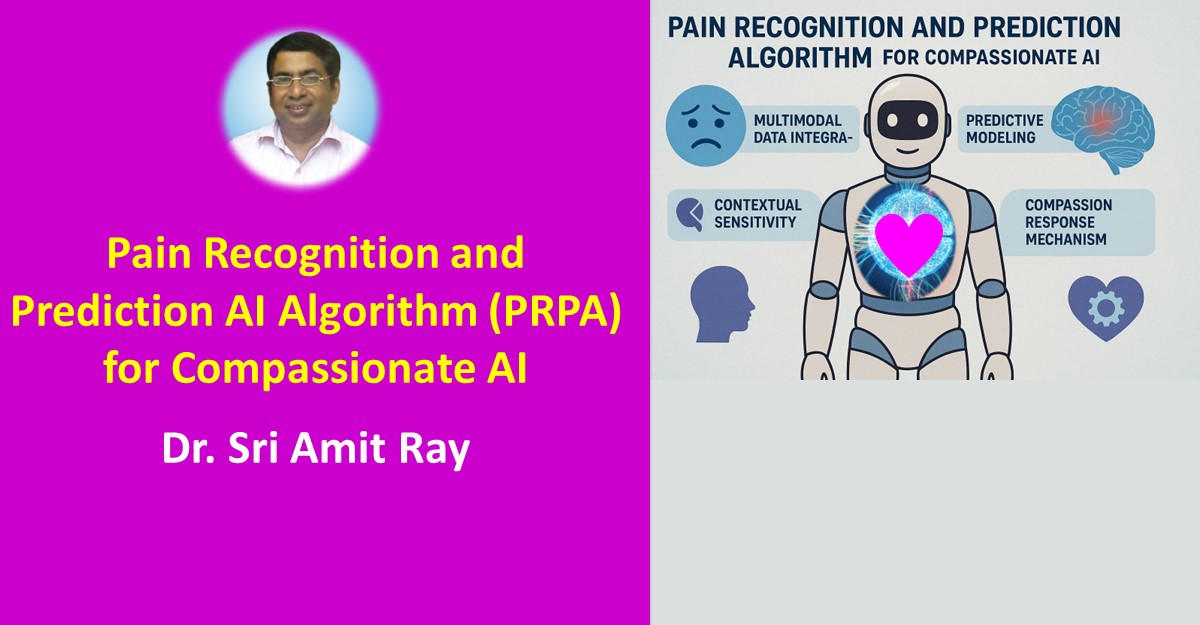At the Sri Amit Ray Compassionate AI Lab, our mission is to create AI systems that embody compassion, reduce suffering, and enhance the well-being of all sentient beings. Unlike conventional AI, which is often designed solely for intelligence, and efficiency, Compassionate AI focuses on alleviating pain—whether physical, emotional, or social.
Over the years, our team has systematically developed 21 primary algorithms that target elimination of different aspects of human and social suffering. These algorithms integrate insights from neuroscience, psychology, ethics, and computational intelligence. Among them, the Pain Recognition and Prediction Algorithm (PRPA) stand as one of the most significant innovations, dedicated to understanding and mitigating the suffering associated with pain.

Introduction
The Pain Recognition and Prediction Algorithm (PRPA) is a Compassionate AI framework designed to detect and predict physical and emotional pain using computer vision and physiological sensors, aligning with Sri Amit Ray's teachings on minimizing suffering through empathy and ethical technology.[1] Modeled similar to the Ray Mother–Infant Inter-brain Synchrony Algorithm (RMI-Sync-AI), PRPA integrates multimodal data (facial expressions, heart rate, galvanic skin response) to provide real-time pain alerts for vulnerable populations, such as hospital patients and the elderly. This article presents a 20-point framework, pseudocode, and use-cases, emphasizing ethical, non-invasive, and empathetic pain assessment and management system for compassionate AI.
"PRPA is not just an algorithm of intelligence; it is AI’s way of listening to human suffering with intelligence that thinks and a heart that feels, and care." - Sri Amit Ray
